SIGHTS AND PLACES Sabah Musuem
A large complex, the Sabah Museum (Tel:253199; mailto: jmuzium@tm.net,my; Muzium; admission RM15; 9am-Spm Sat-Thu) is centred on a modern four-storey structure inspired by the longhouses of the Rungus and Murut tribes. It's a little south of the city centre, on a hill on the corner of Jln Tunku Abdul Rahman and Jln Penampang, and could easily occupy a half day or so.
At the main building there are good permanent collections of tribal and historical artifacts, including ceramics, and some nicely presented exhibits of flora and fauna. The prehistory gallery even has a replica limestone cave, in case you don't make it to Gomantong, Madai or any of the other real ones!
In the gardens, the Heritage Village offers the chance to wander round examples of traditional tribal dwellings, including Kadazan bamboo houses and a Chinese farmhouse, all nicely set on a lily-pad lake.
The adjoining Science & Education Centre has an informative exhibition on the petroleum industry, from drilling to refining and processing. The Sabah Art Gallery features regular shows and exhibitions by local artists.
A short walk towards town is another annexed, the Museum of Islamic Civilisation (Tel: 538234; admission included in the Sabah Museum ticket; (9am-5pm Sat-Thu), devoted to Muslim culture and history.
If you're heading east after KK, keep hold of your admission ticket - it will also allow you entry to Agnes Keith House in Sandakan. To get to the museum complex, catch a bus (50 sen) along Jln Tunku Abdul Rahman and get off Just before the mosque. Bus 13 also goes right round past the hospital and stops near Jln Muzium.
State Mosque
A fine example of contemporary Islamic architecture, this mosque (Jln Tunku Abdul Rahman) is set some distance from the heat and noise of central KK. It's south of the city center past the Kampung Air stilt village, not far from the Sabah Museum; you'll see the striped minaret and Octopussy-style doiur on your way to or from the airport.
Built in 1977, the mosque has since been upstaged by the massive new City Mosque at Likas Bay; nonetheless, it's still an impressive building, accommodating 5000 male worshippers inside and 500 women on the balcony. Non-Muslim visitors are allowed inside, but must dress appropriately and remove their shoes before entering.
Kota Kinabalu Bird Sanctuary
Opened in 2000, this sanctuary (Tel: 246955); kkcbs@tm.net.my; Jln Bukit Bendera Upper; adult/child RM10/5; 8am-6pm Tue-Sun) covers 24 hectares of mangrove swamp in the northeastern Suburb of Likas.
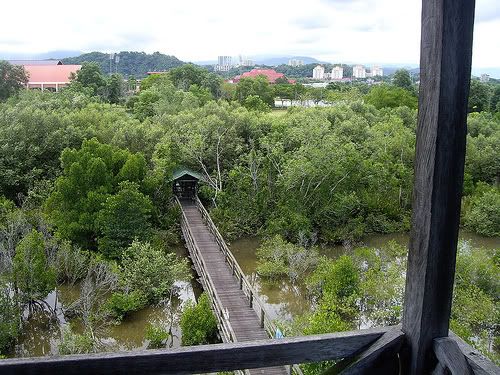 Kota Kinabalu Bird Sanctuary
Kota Kinabalu Bird SanctuaryBeing so near the city it's not exactly overrun with birdlife, but the 1.5km boardwalk offers plenty of sightings and there are some rare treats, like the majestic purple herons visible from a blind in the northwest section of the reserve.
Run by the local Likas Wetlands Society in association with the World Wide Fund for Nature (WWF), the sanctuary reception has a small library and you can rent binoculars for RMS. It's best to visit early in the morning or late afternoon from September to April.
North Borneo Railway
Founded in 1896 and restored in 2000 to celebrate KK's new city status, the North Borneo Railway ( Tel: 263933; www.northborneorailway.com.my; adult/child RM180/130) offers visitors the chance to travel in fine colonial style with a refurbished wood-burning 1954 Vulcan steam locomotive, one of the last of its kind.
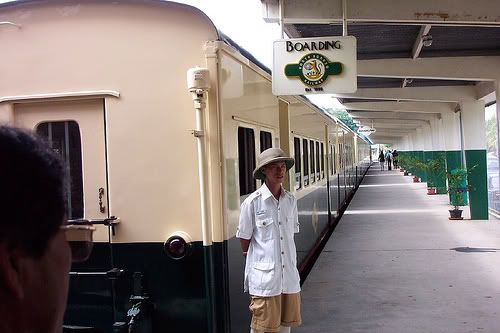 North Borneo Railway
North Borneo RailwayThe train runs from Tanjung Aru train station to Papar on Monday, Wednesday and Saturday, departing KK at l0am and returning around 2pm. The fare includes a boxed `tiffin' lunch.
Other Attractions
You can wander up to the UFO-like observation pavilion on Signal Hill, at the eastern edge of the city centre, to escape the traffic and to get another take on the squatters' stilt village at Pulau Gaya.
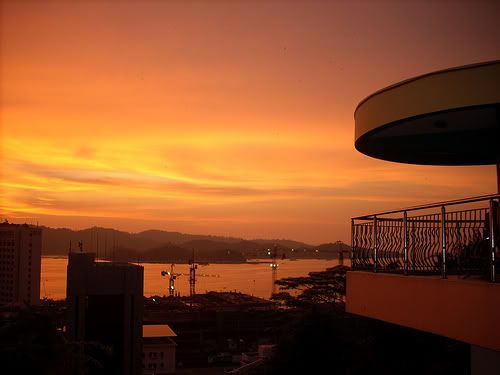 The view atop Signal Hill
The view atop Signal HillThe view is best as the sun sets over the islands. From the top, it's also possible to hike down to the bird sanctuary on the other side.
The modest timepiece at the foot of the bill is the Atkinson Clock Tower, one of the only structures to survive the Allied bombing of Jesselton in 1945. It's a square, 15.7m-high wooden structure that was completed in 1905 and named after the first district officer of the town, FG Atkinson, who died of malaria aged 28. The tower was once visible from the sea, though there's now quite a few buildings in the way!
There's a busy food market (Jln Tun Fuad Stephens) on the waterfront adjacent to the Filipino market (Jln Tun Fuad Stephens) handicrafts centre, with numerous vendors selling souvenirs,
snacks and seafood.
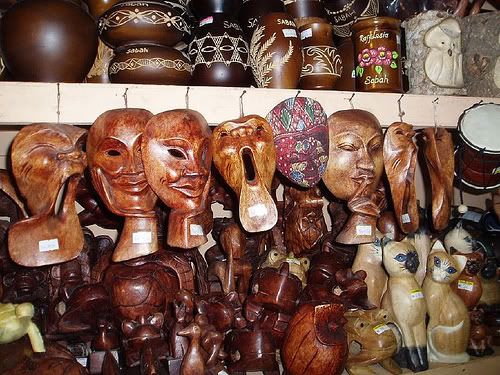
Filipino Market
On Sunday a very lively Chinese street market takes over the entire length of Jln Gaya, with all kinds of food and goods (including some great pancakes). On Chinese New Year it goes completely crazy - you'll hear the gongs and dances starting around 7am!
This post is part of a series. Your are now at Part II
Go to Part I III IV


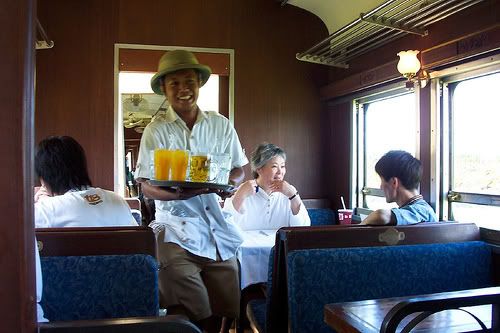


0 comments:
Post a Comment